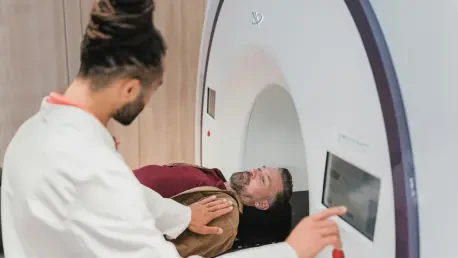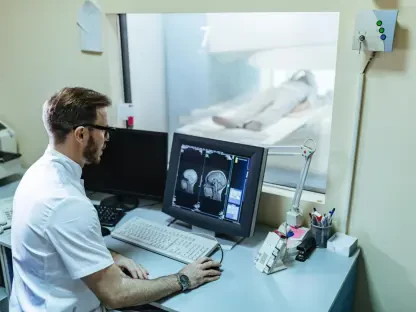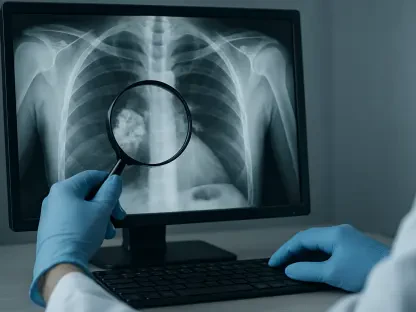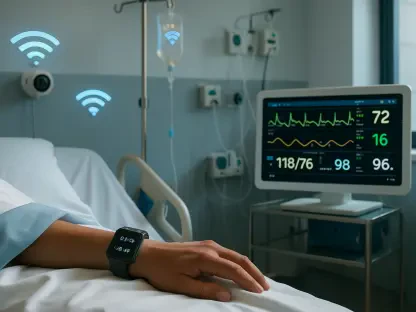In a stark reminder of the hazards posed by magnetic resonance imaging (MRI) machines, a tragic incident involving Keith McAllister at Nassau Open MRI in Long Island has cast a spotlight on the critical importance of understanding which metals are dangerous in the vicinity of these powerful imaging devices. McAllister’s accident, caused by the machine’s magnetic force pulling a weightlifting chain mistaken for a bike chain, has underscored the need for heightened vigilance. This chain, made primarily of steel, demonstrated the dangers associated with ferromagnetic materials in MRI environments. The strong magnetic fields utilized by MRI machines react vigorously with iron and steel objects, potentially transforming everyday items into dangerous projectiles. The powerful magnetic environment demands stringent safety protocols to protect patients and medical staff from such risks. The incident has spurred experts and healthcare facilities to revisit existing safety measures and educate the public about the dangers of certain metals near MRI machines.
Misconceptions and Realities of MRI Safety
The prevailing misconceptions about MRI safety often stem from a misunderstanding of which metals pose a threat in these environments. This confusion can lead to dangerous scenarios, as evidenced by the tragic events involving Keith McAllister. Experts have clarified that, contrary to popular belief, not all metals react with MRI machines. Common jewelry made from non-ferromagnetic metals like gold and silver is usually safe near MRI machines. However, as a precautionary measure to prevent image interference or potential skin heating, it’s advisable to remove all metal items before undergoing an MRI. The misunderstanding often arises from the assumption that all metals have identical properties. This assumption can lead people to either overestimate the risk of non-ferromagnetic materials or underestimate the risks associated with ferromagnetic ones. Clarifying these misconceptions is essential for ensuring safety and preventing future incidents. The event has prompted healthcare professionals to emphasize knowledge sharing as a crucial tool in MRI safety protocols.
Enhancing Safety Practices
In light of recent incidents and growing awareness of the potential dangers associated with certain metals and MRIs, healthcare facilities are actively adopting enhanced safety protocols. Many institutions are incorporating the use of ferromagnetic detectors as a preventive measure, allowing them to screen for potentially hazardous objects before a patient enters the MRI suite. These detectors serve as a critical line of defense, ensuring that ferromagnetic materials are identified and removed in advance, thus preventing accidents. Feedback and reactions from social media platforms, especially from healthcare professionals, have revealed a collective shock and determination to enforce stricter safety measures. The tragic accident has catalyzed discussions around safety best practices and the importance of rigorous training for both medical personnel and patients. As healthcare facilities reevaluate their protocols, both patients and professionals are encouraged to maintain vigilance and adhere to established guidelines.
Education and Preventive Measures
Education plays a pivotal role in mitigating the risks associated with MRI machines. The recent tragedy has highlighted the necessity for comprehensive training that includes understanding the properties of different metals in relation to MRI technology. Such training programs are crucial for medical staff, as well as educational initiatives designed for patients who might be unfamiliar with the technical details of MRI procedures. This educational endeavor extends beyond the walls of medical facilities, calling for a broader public education campaign to raise awareness about MRI safety. By equipping both professionals and the public with the necessary knowledge, the healthcare community can prevent future incidents. The collective goal is to develop focused outreach and training initiatives that deliver practical and accessible information about safe practices around MRI machines, thus ensuring that everyone is well-informed about the associated risks and necessary precautions.
Moving Forward with Caution
A recent incident at Nassau Open MRI in Long Island serves as a grim reminder of the dangers posed by magnetic resonance imaging (MRI) machines. Keith McAllister’s tragic accident drew attention to the urgent need for awareness about the types of metals that pose risks around these powerful imaging devices. The accident occurred when the MRI’s formidable magnetic force pulled in a weightlifting chain mistakenly identified as a bike chain. This chain, primarily composed of steel, highlighted the dangers associated with ferromagnetic materials in MRI settings. MRI machines utilize strong magnetic fields that react intensely with iron and steel objects, sometimes turning mundane objects into hazardous projectiles. This environment necessitates stringent safety protocols to protect both patients and medical staff from potential risks. In light of this incident, experts and healthcare facilities are re-evaluating existing safety measures and emphasizing the need to inform the public about the dangers of certain metals near MRI machines.









